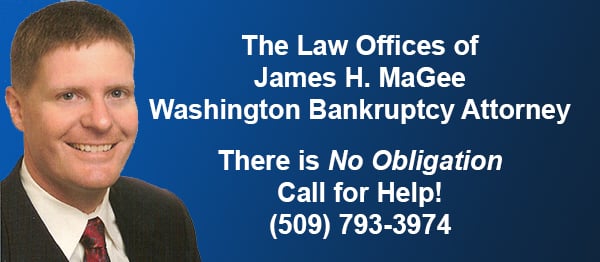Kickstarter is no gimmick: Amazingly, since 2009 Kickstarter.com has received pledges of $450 million dollars for more than 35,000 projects.
Kickstarter.com provides a valuable payment platform and portal for people to donate financially to the development of your idea. You promote your idea yourself, and then direct people to pledge funding to it by promising to permit a credit card charge when your idea reaches its funding goal. In todays world of Facebook, email, Linked In and Twitter, there are many ways to get the word out about your Kickstarter.com project, and to seek donations.
But Kickstarter.com is for the proactive inventor – If the project is not successful in reaching its stated funding goal by a stated funding deadline, then the credit card of the donor is never charged and the project terminates off of Kickstarter.com and is never funded. If using Kickstarter.com, you have to get off your duff and promote your project to potential donors, lest the project die unfunded for failing to meet the donation pledge goal by the stated deadline.
Here is how it works: So once you place your project on Kickstarter.com, then you start phoning all of your friends and family and asking them to phone their friends and family to make Kickstarter.com pledges. You also dun your Facebook “friends” to check out your Kickstarter.com project and to make donations…..and the idea is that you create “buzz” about your Kickstarter.com project with twitter posts and other social media, seeking more interested donors.
What do the donors receive for making a donation to your kickstarter.com project? Well, nothing, unless you promise the donors something. They do not receive any ownership interest or share nor rights to dividends or royalties on down the road in your invention or production. The donors have no future claim on you nor your invention or production.
The project to which you donate has a stated promised completion deadline, and donors are to receive RSS updates from you the developer as the project proceeds along, so your donors do learn what is going on with their money.
Also, some project promotors placing their project on Kickstarter will promise “rewards” – such as a free T-shirt saying “I donated to George Washigton nude” or perhaps an autograph of the soon-to-be-famous writer/artist to whom the donation was pledged, once the project is funded.
What do you get from Kickstarter.com? Well, money to pursue your dream project! If you are seeking riches, and should you prove to have a lucky good idea, then you may be “discovered” by an investor, promotor, supporter or backer who offers to further back your project or to buy the rights to continue along with your idea.
Any project you promote for donations on Kickstarter must be a project with a clear goal. “Fund my life” projects for further education or a vacation are not allowed. Whether it be creating a work of art, creating a music album, editing and publishing a book or completing a technology invention prototype, there must be a definable completed product to be eligible.
Examples: Some projects of all different sizes have been suprisingly successful at receiving funding, and some have been done by very local people here in the Pacific Northwest:
– Morgan Stinson of Olympia, Washington is creating a game called “Dracula: Judicial Inquest” for which he has received $340 in Kickstarter.com pledges, and he will thus likely meet his goal of $400 in pledges, for as of February 28, 2013, he still had 15 days left to gather pledges before his project pledge expiration deadline of March 14, 2013. Morgan is offering t-shirts as a reward for pledges over a certain level.
Others are bigger and receive amazing levels of pledges:
-Development of a “nano lightbulb” hoping to be the most efficient lightbulb ever has received donation pledges of $240,967, which is 1,204% of the requested $20,000 in donations – as as of February 28, 2013, there were still 7 days left to pledge.
-Amazingly, the development of an “affordable desktop 3-D printer” received $2,945,855 in pledges, which was 2,945% of what was requested as only $100,000 in pledges was requested. Simply amazing.
Many projects are modest and yet receive suprising levels of funding:
– “Growgarden: a simple hydrogarden in a jar” has received pledges of $6,823, which is 1,364% of what was requested in pledges, and as of 2/28/13, there are still seven days remaining to make a pledge.
Where does bankruptcy come into this? Since this is after all a bankruptcy blog……
If you have an idea, keep it in your head and do not develop it and do not post it on Kickstarter.com until AFTER you file for bankruptcy. Intellectual property like ideas and inventions can be taken away from you in bankruptcy and sold to the highest bidder by the bankruptcy court trustee.
As a precaution, you should list in your bankruptcy papers that you have an idea or a concept for a “growgarden” or other such invention, but that there is not even a prototype. In a bankruptcy case, the court trustee has to quickly decide whether it wants to take away and promote your idea – and if it chooses not to do so, then the idea and all rights to it are returned to your full right and ownership without limitation. I am almost certain that in the overwhelming majority of cases your idea will receive no interference or expression interest. When the bankruptcy court trustee takes a “pass” on taking and promoting your idea then the idea/product is returned to you free and clear.
So, if you have an idea like the “nano lightbulb”, the “growgarden” or “Dracula: Judicial Inquest” you should first get rid of any troublesome debts by way of bankruptcy filing before you further formulate the prototype model and you should certainly file for bankruptcy to get rid of troublesome debts before you post the idea on Kickstarter.com seeking donations towards the prototype development and subsequent marketing.
But returning to the “smartwatch” idea which was promoted and discovered on Kickstarter.com: Mr. Pogue of the New York Times liked the “Martian Watch”. I liked it too: here are a few highlights: eventually, it will have a “find your iphone app” whereby you can make your iphone ring to locate it when lost by activating a function on the watch. Likewise, your smartphone will broadcast (via bluetooth) text messages, facebook posts and e-mails for viewing on your “Martian Watch”.
The “Martian watch” can also be configured to announce and read aloud incoming text messages and it can set off your smart phone’s camera remotely. The “Martian watch” also functions as a speaker phone, so you can really be just like Dick Tracy, the famous comicbook detective, and speak directly into your watch….
And you can use Apple’s Siri function to tell your “Martian watch” to “dial mom’s cell phone” and then have a wristwatch speakerphone conversation with mom… without ever touching your cell phone… pretty cool!
One last thing – the Pebble Watch (a competitor of the “Martian Watch”) raised $10 million in development funds on Kickstarter.com.
Ready to dust off that idea?


